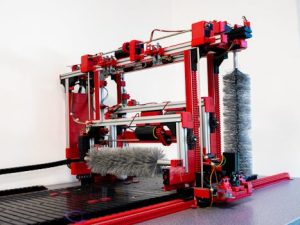Structural Batteries: When Your Car Frame Powers Your Drive
A structural battery is a revolutionary technology that is set to change the game for electric vehicles. While traditional electric cars rely on separate battery cells to power the vehicle, structural batteries integrate the car’s frame with the energy storage system. This means that the car’s body structure is not only used for protection and support, but also as a source of energy. This innovative approach has the potential to greatly improve the performance, range, and sustainability of electric vehicles. In this article, we’ll delve into the world of structural batteries, exploring how they work, their advantages, and the potential impact they could have on the future of transportation.
The Basics of Structural Batteries
At its core, a structural battery is a type of rechargeable battery that is designed to function as an integral part of a structure while providing energy storage capabilities. This means that instead of being a separate component, the battery is integrated into the structure itself. In the case of electric cars, this means that the car’s frame also serves as its battery.
Structural batteries typically use lightweight and high-strength materials such as carbon fiber composites, which have the ability to store and release electrical energy. The battery is then coated with materials that act as conductors, allowing the energy to flow through the structure. This results in a seamless and efficient integration between the car’s frame and its energy storage system.
How Do Structural Batteries Work?
The concept of structural batteries is based on the intercalation process, which is the insertion of ions into the structure of a material. This process allows the energy to be stored and released as needed, providing power to the vehicle’s electric motor. Structural batteries also use a series of interconnected cells, similar to traditional batteries, to create a larger and more powerful energy storage system.
When the car is in operation, the battery cells within the structure are connected in a series, providing a high voltage output to power the motor. When the car is stationary, the cells can be connected in parallel to provide a lower but sustained energy output, allowing for longer periods of use without the need for charging.
Benefits of Structural Batteries for Electric Vehicles
The integration of structural batteries into electric vehicles has several notable advantages, making them a promising solution for the future of transportation. Here are some of the benefits that structural batteries bring to the table:
1. Increased Range
One of the biggest concerns for electric car owners is the limited driving range on a single charge. With structural batteries, the car’s frame is essentially one large battery, which can store a significant amount of energy. This means that with structural batteries, electric cars could potentially have a much longer range, making them more practical for everyday use and longer journeys.
2. Improved Performance
Traditional electric cars often have a bulky and heavy battery pack that can impact overall performance and handling. With structural batteries, the frame of the car is used as the battery, which means that the weight is distributed evenly across the vehicle. This can result in improved performance and handling, making the driving experience more enjoyable.
3. Sustainable Design
The use of lightweight and high-strength materials in structural batteries not only improves performance but also makes the car more sustainable. By reducing the weight of the vehicle, less energy is required to power it, resulting in reduced emissions and a smaller carbon footprint. This makes structural batteries a more environmentally friendly option for electric vehicles.
The Future of Structural Batteries
With the growing demand for sustainable transportation solutions, the development of structural batteries is gaining significant traction. Companies such as Fisker, Tesla, and BMW are already investing resources into this technology, and it is expected to become a mainstream feature in electric vehicles in the near future.
The potential impact of structural batteries on the transportation industry cannot be denied. Not only do they offer practical benefits for electric cars, but they also have the potential to be used in other forms of transportation such as airplanes and drones, further revolutionizing the industry.
In Conclusion
Structural batteries are a groundbreaking technology that has the potential to greatly improve the performance, range, and sustainability of electric vehicles. By seamlessly integrating the car’s frame with its energy storage system, structural batteries offer several notable benefits, making them a promising solution for the future of transportation. With further research and development, we could soon see structural batteries powering a wide range of vehicles, bringing us one step closer to a more sustainable and cleaner world.










